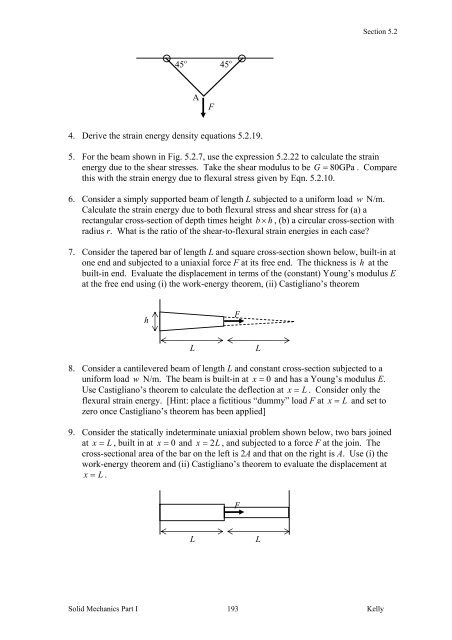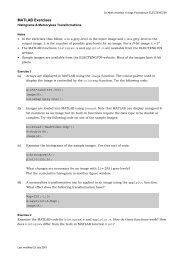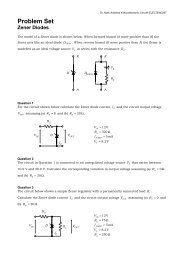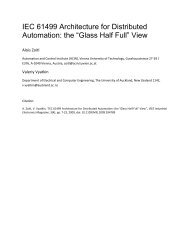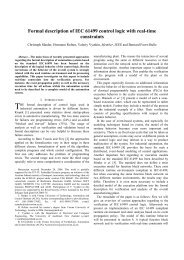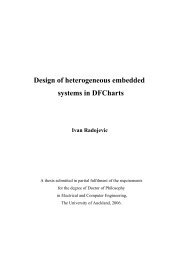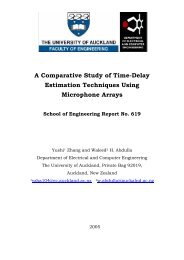5.2 Elastic Strain Energy
5.2 Elastic Strain Energy
5.2 Elastic Strain Energy
You also want an ePaper? Increase the reach of your titles
YUMPU automatically turns print PDFs into web optimized ePapers that Google loves.
4. Derive the strain energy density equations <strong>5.2</strong>.19.<br />
Section <strong>5.2</strong><br />
5. For the beam shown in Fig. <strong>5.2</strong>.7, use the expression <strong>5.2</strong>.22 to calculate the strain<br />
energy due to the shear stresses. Take the shear modulus to be G = 80GPa<br />
. Compare<br />
this with the strain energy due to flexural stress given by Eqn. <strong>5.2</strong>.10.<br />
6. Consider a simply supported beam of length L subjected to a uniform load w N/m.<br />
Calculate the strain energy due to both flexural stress and shear stress for (a) a<br />
rectangular cross-section of depth times height b × h , (b) a circular cross-section with<br />
radius r. What is the ratio of the shear-to-flexural strain energies in each case?<br />
7. Consider the tapered bar of length L and square cross-section shown below, built-in at<br />
one end and subjected to a uniaxial force F at its free end. The thickness is h at the<br />
built-in end. Evaluate the displacement in terms of the (constant) Young’s modulus E<br />
at the free end using (i) the work-energy theorem, (ii) Castigliano’s theorem<br />
h<br />
o<br />
45<br />
A<br />
F<br />
o<br />
45<br />
8. Consider a cantilevered beam of length L and constant cross-section subjected to a<br />
uniform load w N/m. The beam is built-in at x = 0 and has a Young’s modulus E.<br />
Use Castigliano’s theorem to calculate the deflection at x = L . Consider only the<br />
flexural strain energy. [Hint: place a fictitious “dummy” load F at x = L and set to<br />
zero once Castigliano’s theorem has been applied]<br />
9. Consider the statically indeterminate uniaxial problem shown below, two bars joined<br />
at x = L , built in at x = 0 and x = 2L<br />
, and subjected to a force F at the join. The<br />
cross-sectional area of the bar on the left is 2A and that on the right is A. Use (i) the<br />
work-energy theorem and (ii) Castigliano’s theorem to evaluate the displacement at<br />
x = L .<br />
Solid Mechanics Part I 193<br />
Kelly<br />
F<br />
L L<br />
F<br />
L L


